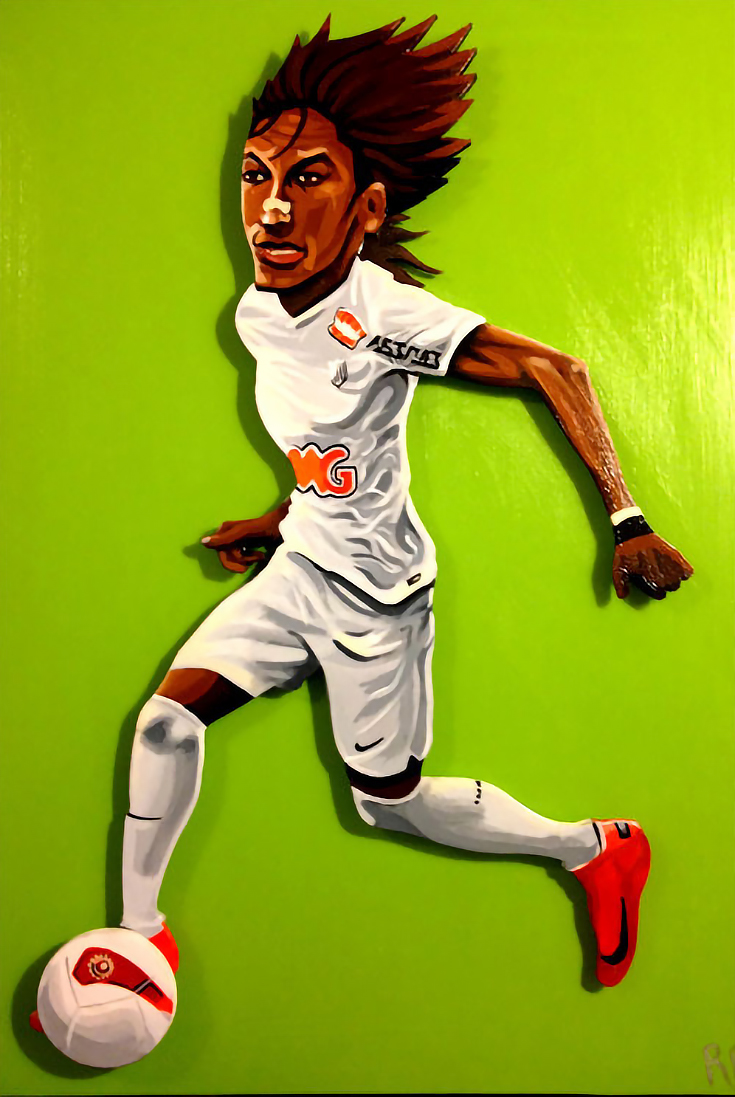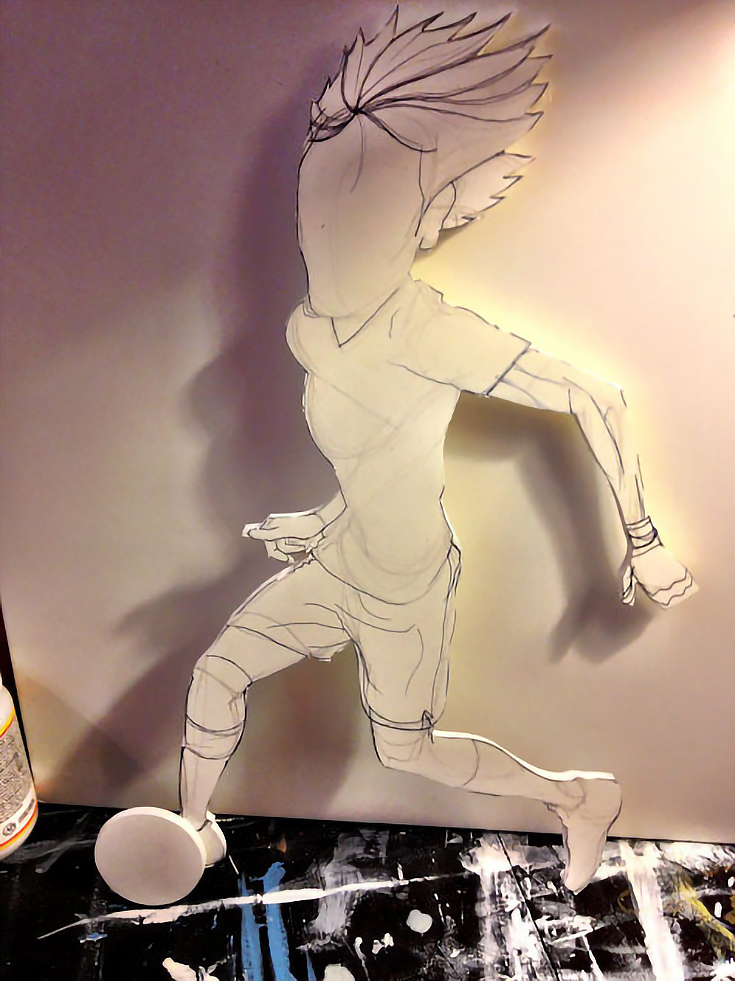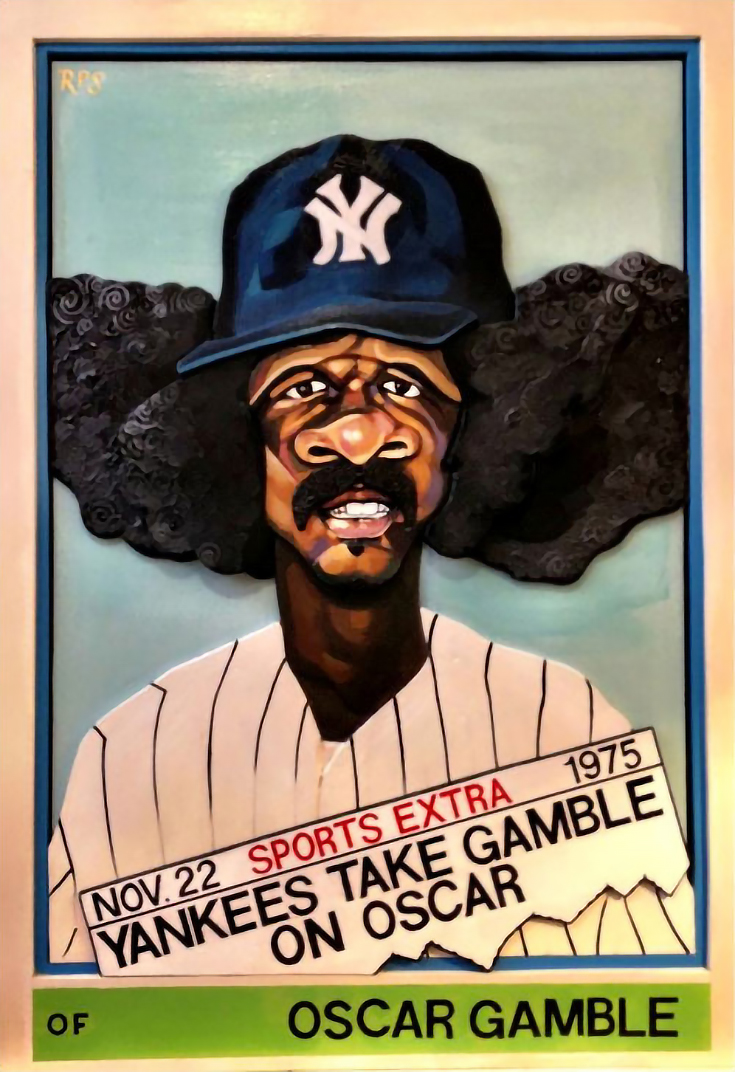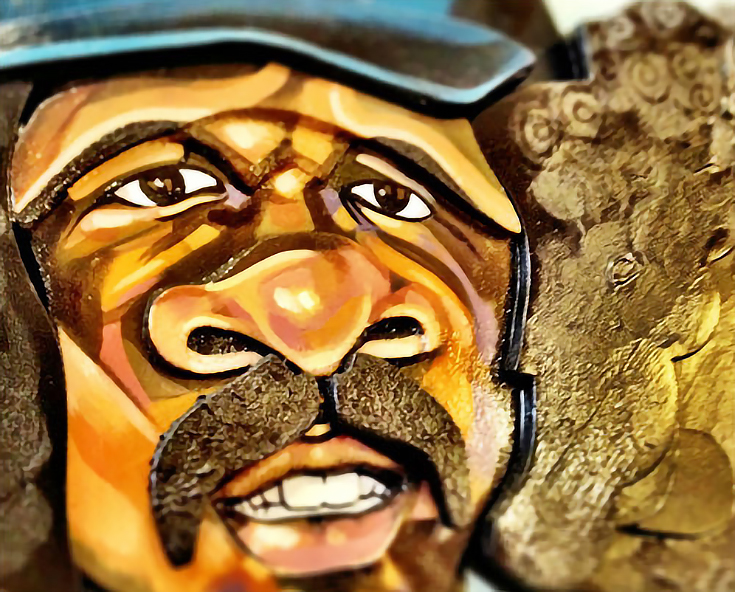
It’s a tradition going all the way back to his great uncle, Dudley Huppler (an accomplished artist who had a working relationship with Andy Warhol) and his grandmother who taught music at Northwestern.
Pierick’s sister is a skilled chef, and his mother works with watercolors and makes jewelry, so you could say that art is simply part of his DNA.
He, however, credits his love of art to his mother, who spent many hours encouraging his talent when he was a young boy—often by starting drawings and then letting him finish them.
Today, Pierick likes to “imagine people touching [his] art 300 years from now and noticing one of [his] eyelashes stuck in the paint.”
Alyice: How long have you been an artist?
Pierick: As an avocation, I was filling sketchbooks, notepads and boxes of loose copy paper with drawings since before I can remember. As an occupation, I’ve only been making art for about 7 months now. I came back to art after 6 years of post-college corporate work. It was awful. I hated my life then.
Alyice: You use foam-core to create 3D, larger than life baseball and basketball cards. Can you tell us how this idea came about?
Pierick: Sports as a subject matter was how I started my current career. I knew I had to make money, so I figured some sort of popular imagery or subject matter would help. And I’m not ashamed, as an artist, to choose this as my subject matter; it reaches a wide demographic.
The idea of doing these old ball cards was a frothy mixture of my interests of sports, the actual hobby of card collection and my warped sense of humor.
I couldn’t get over the styles of these athletes from the 70s. The athlete of years past is so different than today’s athletes. Not to rip on past generations of pro players but some of these guys looked more like 8th grade science teachers and insurance salesman than professional athletes. It was different then.
I saw these characters as a chance to play around and have fun. The process and materials were born from my wish to make fun and approachable art.
Alyice: You call this type of art, Pop-Pop Art. How did you come up with the name?
Pierick: I was calling them Assemblables because of the process and how it involved assembling these pieces, but that word is hard to say and I don’t think it’s actually a word.
To start, I’m using highly representational imagery that’s pulled from popular culture, so that’s your first ‘Pop.’ Think Warhol doing Marilyn Monroe or soup cans.
The second ‘Pop’ refers to the aforementioned 3-dimensionality of the work. It pops off the plane of 2-dimensions.
Alyice: Although your Pop-Pop Art is a fairly new medium for you, you’ve been an artist for quite some time. How has your style changed over the years?
Pierick: It’s funny because all those sketchbooks and notepads I did as a kid are filled with football players and baseball players. I was a machine; sports, sports and more sports. But then I went to college and was poisoned with miles of Art Theory.
I thought all my work had to unveil my tortured soul and the normal despair that touches us all. There’s nothing wrong with that but it really froze my creativity up for years. I was self-editing my ideas down to dust. I made no work for about 7 or 8 years. About 8 months ago, I was doodling a football helmet on a napkin while talking on the phone and it kind of hit me. I was like, “Hey, I remember you.”
Alyice: What is your creative process like?
Pierick: My creative process is the control that I enjoy while doing these. The subject matter is pretty loose and easy to digest, but technically I want to be perfect.
For example, I only use an X-acto blade for a few cuts before replacing it, and I write down color ratios for pigments to be recreated for later use. I get kind of nuts with the details, especially for a guy who’s never been able to keep two matching socks together beyond their initial use.
As for the pieces themselves, I cut pieces from foam core, paint them, and then assemble them to make sort of a pop-out image that flirts with real physical 3-dimensionality. I want the viewer to want to touch it.
Alyice: What is the most difficult part about working with foam-core?
Pierick: Foam-core begins to bundle if your blade isn’t sharp enough.
When your blade is sharp you get a nice clean edge. When it isn’t, the edges are left knotty and rather ragged. Also, because the acrylic paint shrinks while drying, you have to paint both sides of the foam-core to keep it from warping or bending. I just use straight gesso on the backside.
Alyice: One of the services you offer is custom Pop-Pop Art. When working with a new client, how do you make sure you’re on the right track?
Pierick: Well most times, my client wants me to impart my style. So they kind of give me a vague idea, or just the individual they want painted and then I go from there. I’ll always do some concept sketches for free, for any potential buyer, present those, and then quote a price.
Alyice: How do you know when a custom piece is done?
Pierick: Knowing when you’re done with any art piece is a huge part of being good.
You probably know when to walk away instinctually, but you have to be able to acknowledge your instinct. It’s easy to overwork a piece. Real easy.
So, I try to distance myself from the piece and walk past it with new eyes. It’ll just say to me, “Hey, man, I’m done. Don’t you dare add another drop of paint.” So I listen.
With that, if I’m asserting that a piece is done, the client almost always agrees.
Alyice: If an artist wanted to start offering custom artwork himself, what advice would you give?
Pierick: That’s a good question. I’d need to see their checking and savings account.
But seriously, if you’re going to offer custom work with the notion of bringing somebody else’s visions or interests to fruition, the best thing is to be highly communicative at the beginning, before you put pen to paper or brush to canvas.
Ask lots of questions. Like many other occupations, those not doing what you do every day may not fully understand the process. I’ve had customers say things like, “Yeah, I want Kobe Bryant dunking on Winnie The Pooh, but can you paint it in this style instead?” I’m thinking to myself, “Are you mad?” But, that’s where the conversation needs to get real, really fast.
Learn more about Pierick and his unique artwork at www.piericksmith.com.
This post may contain affiliate links.




